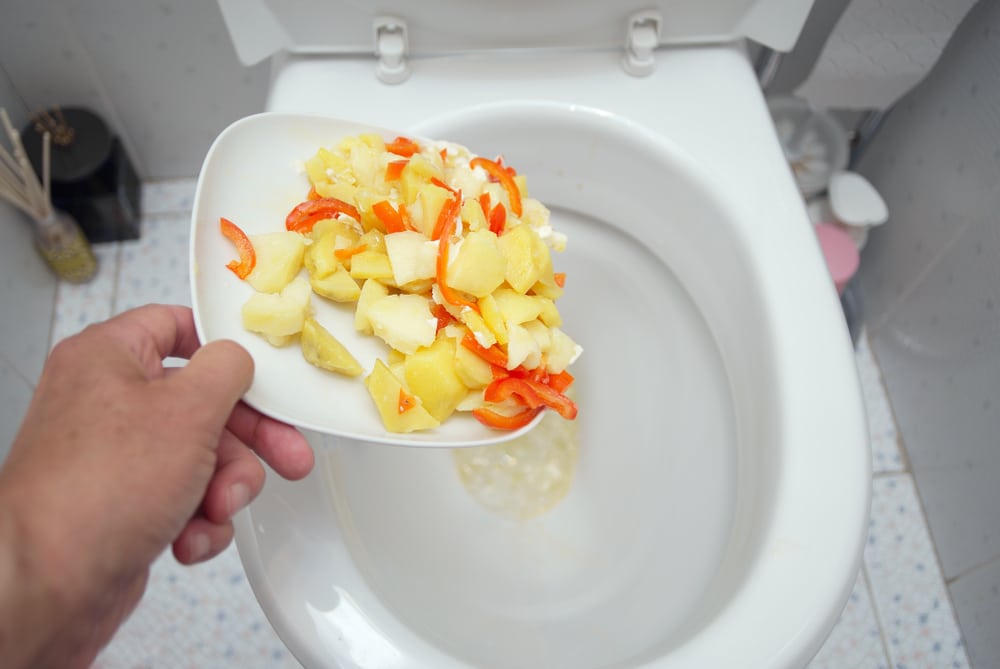Are You Permitted to Flush Food in the Toilet?
Are You Permitted to Flush Food in the Toilet?
Blog Article
What are your insights and beliefs about What Can Happen If You Flush Food Down the Toilet??

Introduction
Lots of people are frequently faced with the predicament of what to do with food waste, especially when it involves leftovers or scraps. One usual inquiry that emerges is whether it's all right to flush food down the toilet. In this post, we'll look into the reasons people may consider flushing food, the effects of doing so, and alternative techniques for appropriate disposal.
Reasons that people may take into consideration flushing food
Lack of awareness
Some people might not understand the prospective damage caused by purging food down the bathroom. They might incorrectly think that it's a harmless practice.
Comfort
Flushing food down the commode may seem like a quick and very easy service to getting rid of undesirable scraps, particularly when there's no neighboring trash can available.
Negligence
In many cases, people may merely pick to flush food out of sheer negligence, without considering the consequences of their actions.
Repercussions of flushing food down the commode
Environmental effect
Food waste that winds up in rivers can add to pollution and harm aquatic environments. Furthermore, the water utilized to flush food can strain water resources.
Plumbing issues
Purging food can cause stopped up pipes and drains, causing costly pipes fixings and aggravations.
Sorts of food that must not be flushed
Coarse foods
Foods with coarse structures such as celery or corn husks can obtain tangled in pipes and create blockages.
Starchy foods
Starchy foods like pasta and rice can take in water and swell, leading to clogs in pipelines.
Oils and fats
Greasy foods like bacon or cooking oils must never be purged down the bathroom as they can solidify and trigger blockages.
Appropriate disposal methods for food waste
Utilizing a waste disposal unit
For homes equipped with waste disposal unit, food scraps can be ground up and flushed through the pipes system. However, not all foods are suitable for disposal in this manner.
Recycling
Specific food packaging materials can be recycled, minimizing waste and decreasing environmental impact.
Composting
Composting is an environment-friendly method to throw away food waste. Organic products can be composted and utilized to improve dirt for gardening.
The relevance of appropriate waste administration
Reducing ecological injury
Appropriate waste management techniques, such as composting and recycling, help decrease contamination and preserve natural resources for future generations.
Shielding plumbing systems
By avoiding the practice of flushing food down the commode, house owners can prevent expensive plumbing fixings and maintain the stability of their plumbing systems.
Final thought
In conclusion, while it might be appealing to purge food down the commode for comfort, it is essential to recognize the possible consequences of this action. By taking on proper waste monitoring practices and throwing away food waste sensibly, individuals can contribute to much healthier plumbing systems and a cleaner atmosphere for all.
FLUSH FOOD DOWN THE TOILET?
FLUSHING FOOD CAN CAUSE BLOCKED DRAINS IN YOUR HOME
All of the plumbing fixtures in your home are connected to the same sewer pipe outside of your home. This outdoor sewer pipe is responsible for transporting all the wastewater from your home to the Council sewer mains. Even small pieces of food that go down the kitchen sink can cause problems for your sewer. It should therefore be obvious that flushing larger bits of food, such as meat, risks a clog in either the toilet itself or the sewer pipes. Flushing greasy food is even more problematic because oil coagulates when it cools, coating the interior lining of your pipes.
THE TOILET IS NOT A BIN
Food isn’t the only thing that people shouldn’t be flushing down the toilet. People use the toilet to dispose of all kinds of things such as tampons, makeup wipes, dental floss, kitty litter and even underwear. Water goes to great lengths to educate residents about the high costs and stress placed on wastewater treatment systems simply from people flushing the wrong stuff down the toilet. It costs taxpayers millions of dollars each year, and homeowners thousands in blocked drain repairs.
FLUSHING FOOD IS A WASTE OF WATER
Flushing food is a waste of our most precious resource - water. In June this year Level 1 water restrictions were introduced to protect water supply from drought conditions. Much of New South Wales continues to be affected by prolonged drought with recent figures revealing up to 97 per cent of the state remains in drought. Depending on whether you have a single or dual flush toilet, every single flush uses between five and 11 litres of water. In the current climate this is a huge amount of water to be wasting on flushing food that should be placed in the bin (or better yet, the compost).
https://www.jabplumbingsolutions.com.au/blog/can-you-flush-food-down-the-toilet

Hopefully you enjoyed reading our part on Flushing Food Down the Toilet?. Thanks a lot for taking the time to browse our posting. In case you liked our blog posting kindly do not forget to share it. I am grateful for your time. Don't hesitate to pay a visit to our blog back soon.
Book My Estimate Report this page